Let’s start with a bit of history. Since 1958 Honda has been chasing “their” dream of creating the perfect solution to effortless transportation. In doing so, Honda managed to engineer and offer to the world what has become the bestselling motor vehicle of all time, the Honda Super Cub. To this day, the Super Cub is the most popular motorized vehicle ever produced, by a long shot. Why? Mainly because it’s effortless to operate. Virtually anyone can hop on a Cub and ride off into the sunset.
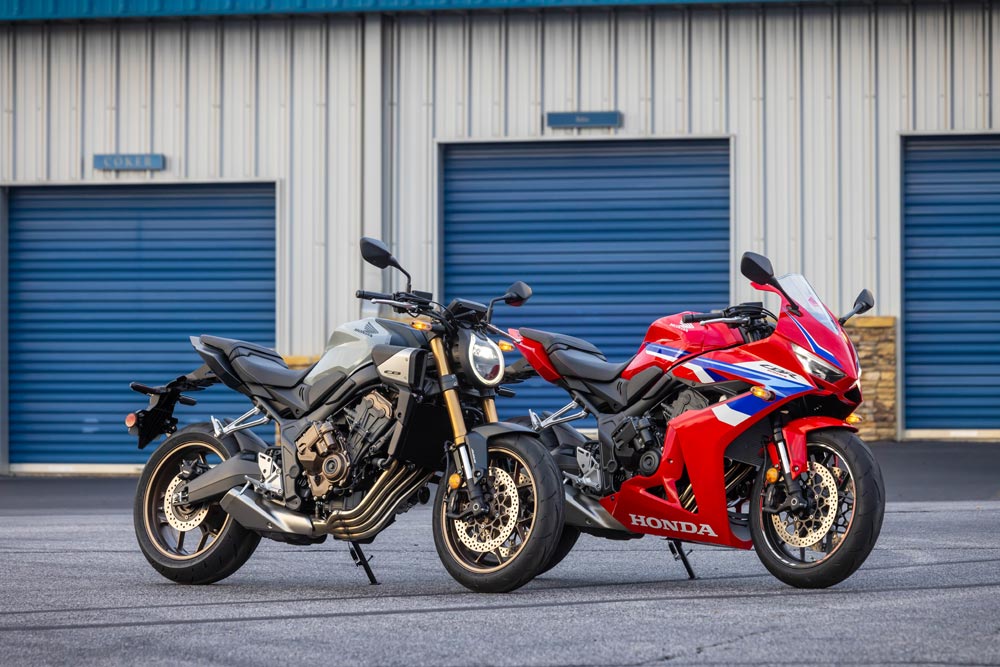
By Keith Dowdle | Photography by Simon Cudby
But let’s face it, it’s not the most exciting thing on two wheels. So, in 1978, Honda introduced the Hondamatic. Both the CB750 and the CB400 were offered with this type of transmission, and even though they did okay in the market, they weren’t revolutionary by any means. Fast forward to 2008 and Honda introduced the DN-01 with its HFT (Human Friendly Transmission). Dealers quickly added their own nomenclature and started calling the bike the Do Not 0rder 1 (DN-01), and, well, it flopped to say the least.
Finally in 2010, we received Honda’s DCT (Dual Clutch Transmission), which first appeared in the VFR1200F and has since been integrated into everything from the Gold Wing to the Africa Twin—and even a few of its cruisers are equipped with this very slick technology that functions like a fully automatic transmission. But don’t use the word automatic around Honda reps, because they insist it’s not automatic but rather a traditional transmission that simply shifts for you. Okay. Regardless of how you describe it, sales of the DCT models vary dramatically depending on the segment. As you might expect, the Gold Wing DCT model represents almost 70 percent of total Gold Wing sales. But for the Africa Twin, the DCT model drops to less than half.
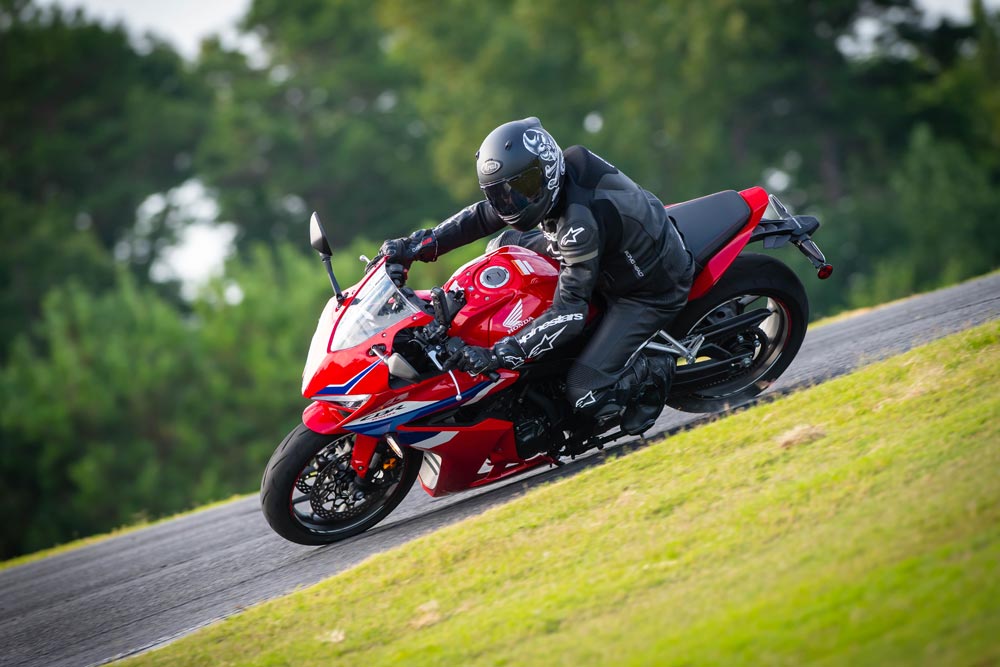
So, DCT is good for some riders, but it’s certainly not the end-all solution in every category. Remember I said that this is “their” dream? That’s because customers aren’t beating the door down for automatic motorcycles and never really have, frankly. For most of us, part of the joy of riding a motorcycle is shifting. Going up and down through the gears, honing your skills, making those perfect shifts that keep the rhythm in tune as you accelerate out of a corner, up shifting as rpm climbs and then downshifting and blipping the throttle into the next turn. Mastering the art of having every limb of your body perform a different action at the same moment in time all while concentrating on picking the perfect line, watching for other traffic, scanning the road for debris, and watching for other things that might kill you. Wait, what? Think about how that all sounds to someone who’s never ridden before. To an experienced rider, it sounds exhilarating because we know how to put it all together in a way that gives us life itself. We live and breathe for those moments.
But imagine if we could have those same experiences—shifting and braking and everything we love about riding—with 25 percent less to think about. Twenty-five percent less to do, but in the same—maybe even in a more satisfying—exhilarating way. That’s called revolutionary, and it perfectly describes Honda’s new E-Clutch technology. It works for everyone. Whether you’re a brand-new rider worried about stalling the bike at a busy intersection or a hard-core track day rider who lives for the perfect quickshift. Finally, there’s technology that works for all of us.
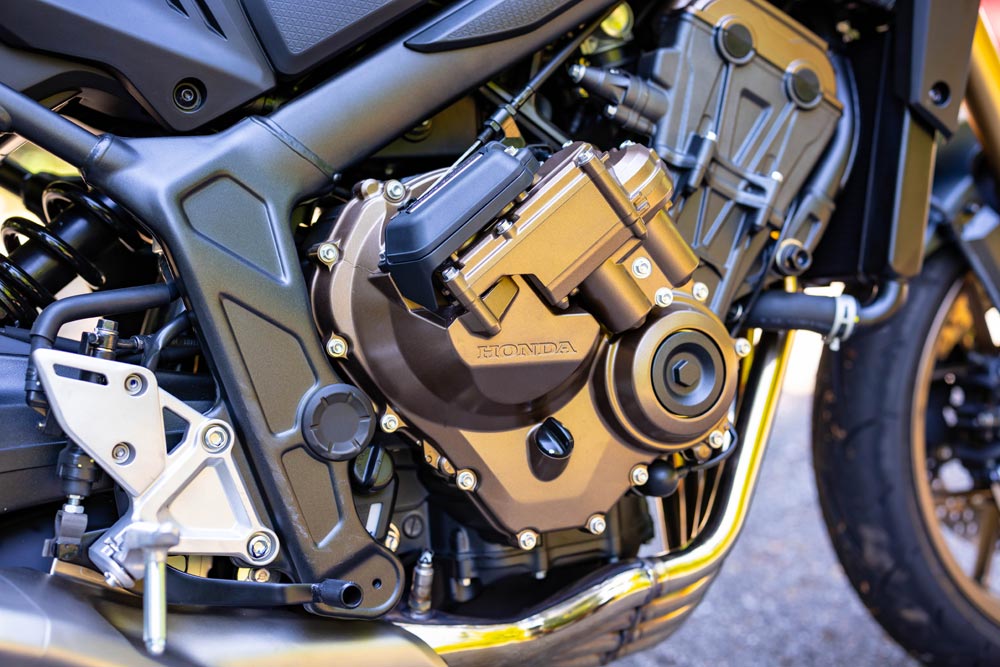
As we gathered at the Atlanta Motorsports Park for the press introduction for Honda’s CB650R and CBR650R, the focus wasn’t as much on the models, since they haven’t changed much, but rather on the E-Clutch system itself and how it works. The Honda reps were all smiles as they described this all-new, first-to-market technology. I say “first to market” because we know that other OEMs are working on similar technology, but Honda is the first to offer it for sale, and personally, I think they nailed it.
The E-Clutch is so simple to understand and operate that within minutes, I was sold. It’s the perfect solution to getting new riders into the market without having them learn to ride on some oddball, one-off-type model where they don’t learn to ride a motorcycle. With the E-Clutch you either choose to use the clutch or not to use the clutch. It’s that simple. Squeeze the clutch, and you’re operating the bike like any other motorcycle you’ve ever ridden. Don’t squeeze the clutch, and you can shift into first gear while sitting still and then ride away and never touch the clutch. Or, if you decide to use the clutch for this shift but not the next, you can. The system activates the E-Clutch for five seconds at low rpm and one second for higher rpm. You can start or stop using it anytime you want, and the result is ultra-smooth shifts up or down and at any rpm. If you’re on a racetrack, like we were for the first part of our ride, what you quickly learn is that an E-Clutch makes for the perfect quickshifter. It’s so fun to ride that I spent the entire three hours, our total allocated time, doing laps, only stopping occasionally to change the E-Clutch settings so that I would have a full understanding of how each setting feels. More on that later.
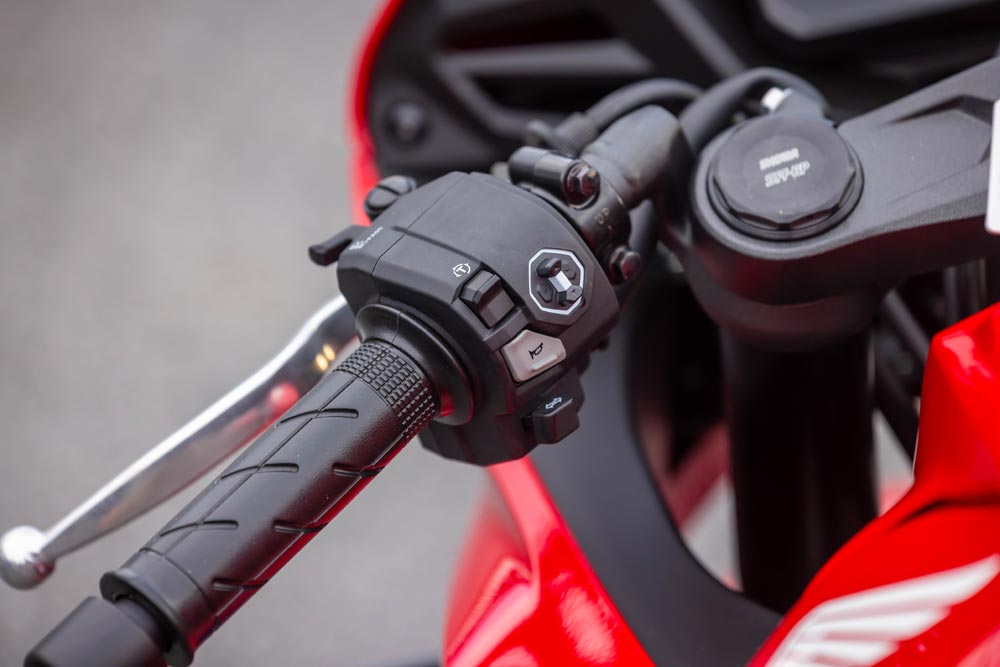
There’s no worry of offending any Honda reps by using the word automatic with these models because the E-Clutch is the only thing that’s different when compared to any other traditional transmission motorcycle. The transmission works exactly the same. Same shift pattern, same natural location, everything. So, if you’ve never ridden before, you will learn how to operate a motorcycle. The E-Clutch allows you to learn the one down, however many up gear transitions found on virtually every motorcycle ever built. You just don’t have to worry about stalling or chugging off on a bucking, angry bike because you didn’t release the clutch properly. That said, you can stall the bike if you squeeze the clutch and don’t release it smoothly. But if you do, you can quickly start it up again and get going without worrying about doing that again. So new riders can learn without needing help or coaching from anyone. It’s amazing technology.
So how does it all work? Initially, when word first broke that this technology was coming, many of us thought that these E-Clutch systems could be retrofitted to existing models, but that’s not the case. There’s much more to it than meets the eye. First, the ECU is working in conjunction with an MCU (Motor Control Unit), which controls two small motors housed inside the system. The ECU monitors shift-lever load, gear position, throttle position, engine rpm, and wheel speed. A rotation angle sensor reads the opening of the clutch plates, and all of this data is fed back to the ECU. Based on the data received, the MCU controls the operation of the clutch, if the E-Clutch is active. The clutch is connected to the clutch arm via a cable just like any other cable-operated clutch, but, unlike a traditional cam-style clutch arm, the E-Clutch arm has gears attached along its shaft. Those gears are driven by the MCU and allow for three different scenarios depending on what the rider does with the clutch lever on the handlebar. Manual control, so no E-Clutch; motor control, for full E-Clutch operation; and manual override if the rider chooses to disable the E-Clutch altogether by switching it off via the switchgear. Some of this technology is derived from Honda’s humanoid robot, named Asimo, so it’s very sophisticated stuff, and, as you can see, not something that we’ll be able to bolt on to anything we currently own.
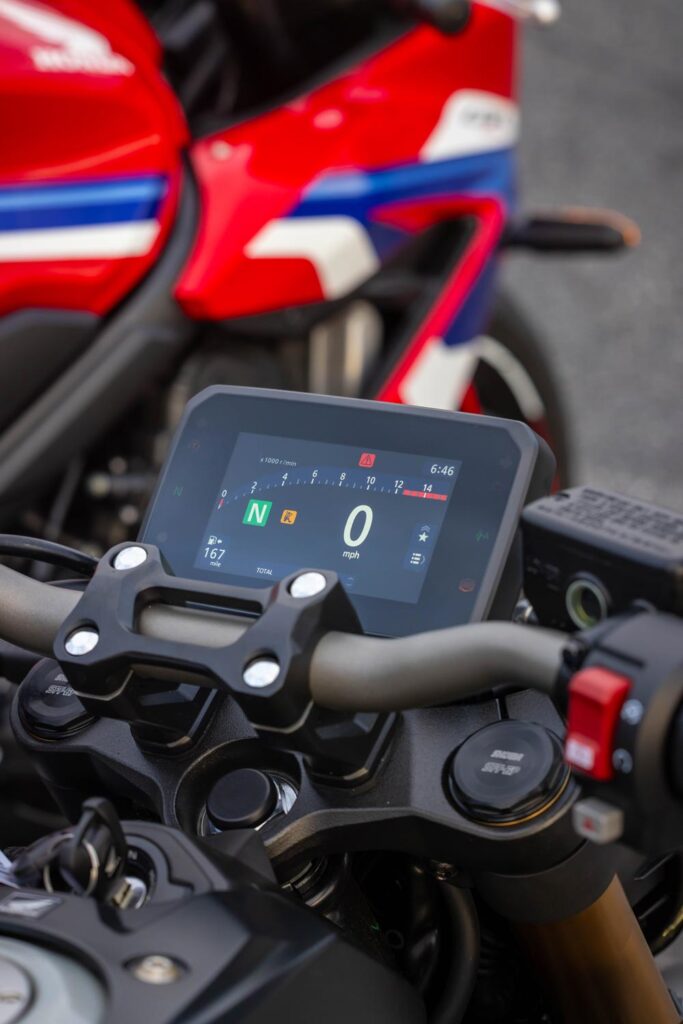
Honda’s Large Project Leader, Mr. Junya Ono, went even further into how the entire system works during the press presentation, but I’ll spare you and instead get to how it feels when you ride. First off, there are three different settings for the E-Clutch itself: Hard, Medium and Soft. There’s a new five-inch TFT screen on both of the new 650s that shows this information, and some handy new switchgear, backlit, I might add, to toggle through the menu setting. The new screen also tells you when to shift up and down so that a new rider can easily learn where the rpm should be and how the motor should sound when it’s time to shift.
All of the bikes that we rode were set to the Medium E-Clutch setting when we started, and initially, I found that setting to be fine as we rode around the parking lot, but once I was out on the track I noticed that while my shifts were positive, the pressure on the shift lever felt a little soft, meaning it shifted too easily, so I stopped, as you must do to change the settings, and scrolled to the Hard setting in the menu. Hard was the best setting for me, as there was just enough pressure on the shift lever that I never accidently shifted or found a false neutral. Soft was way too soft, and I only did one lap before stopping again and going back to the Hard setting, which is where I left it for the rest of the day.
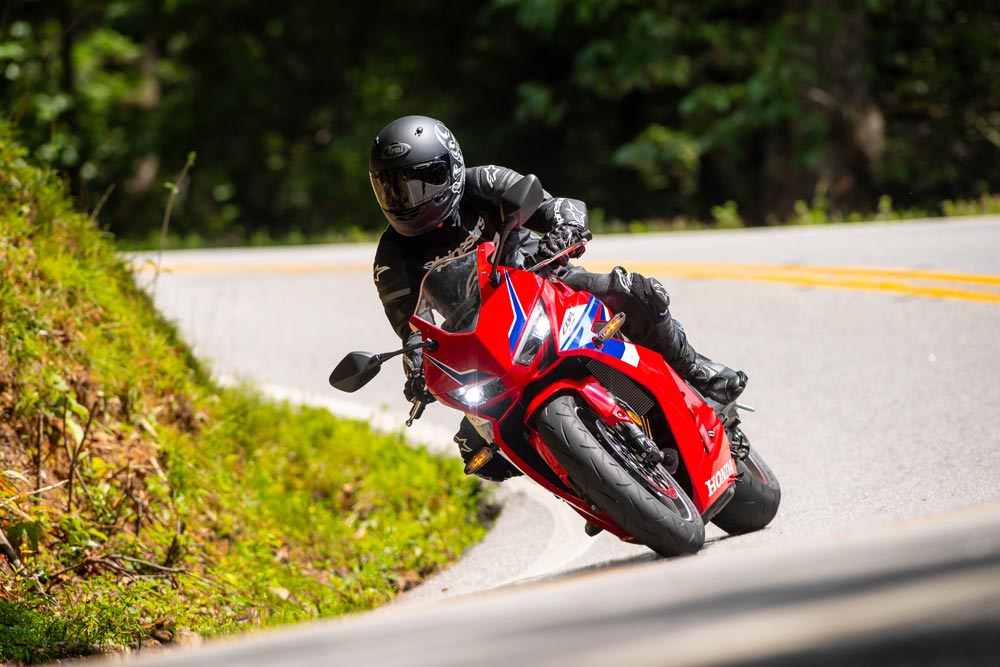
Not using the clutch, even though there’s a lever there, is hard for someone who’s been riding for 50-some-odd years, but eventually, I forced myself to keep my fingers tight around the grip on my left hand and let the E-Clutch work. And work it does. Being lucky enough in this job to have ridden lots of new motorcycles, many with some very good quickshifters, the feeling of shifting with the E-Clutch is slightly different in that rather than simply relying on ignition timing and fuel metering to allow a shift to happen smoothly, the E-Clutch is also actively working in the background using a half-clutch action to assist the rider. The result is ultra-smooth shifts all the way through the transmission up or down and with the throttle in the open position.
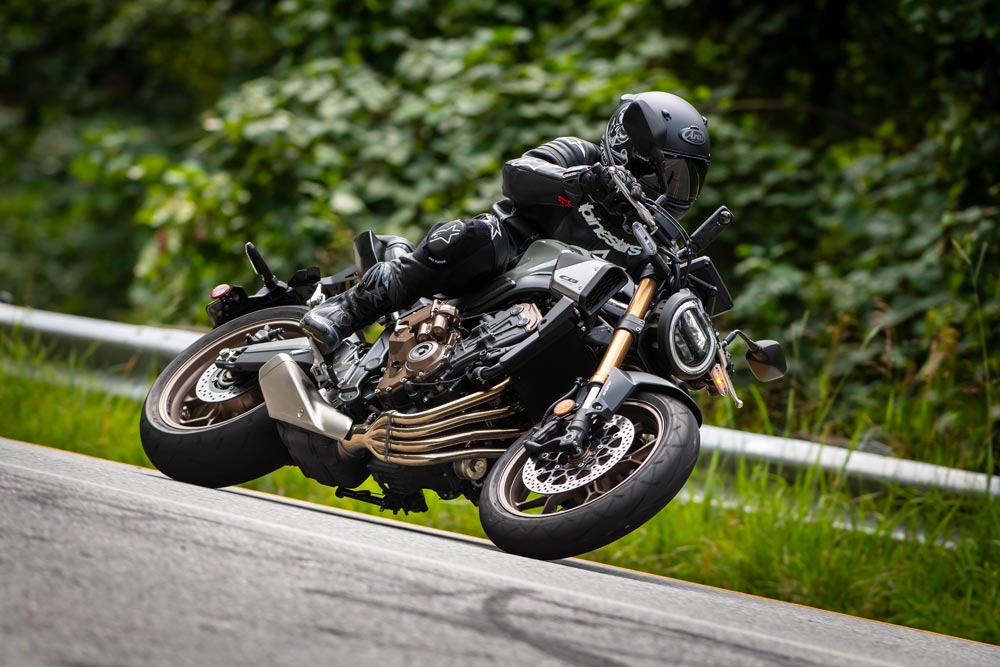
The Honda reps told us to be sure to shift with the throttle open, as you would with a quickshifter. This keeps the chassis stable, especially when down-shifting into a turn. Additionally, unlike a quickshifter, you don’t have to worry about timing your shift so precisely, and any mistakes or mistimed shifts go virtually unnoticed since the clutch is working in the background. This greatly reduces shift shock, even if an egregious shift error occurs. As I said earlier, I absolutely loved riding these bikes on the racetrack. The sound of the inline-four engine screaming around the track is simply awesome, and even though the E-Clutch works flawlessly, I do miss the pop that I’m used to hearing when up-shifting with the throttle pinned. You know what I’m talking about if you’ve been around road racing very long. That said, this system works better, for sure.
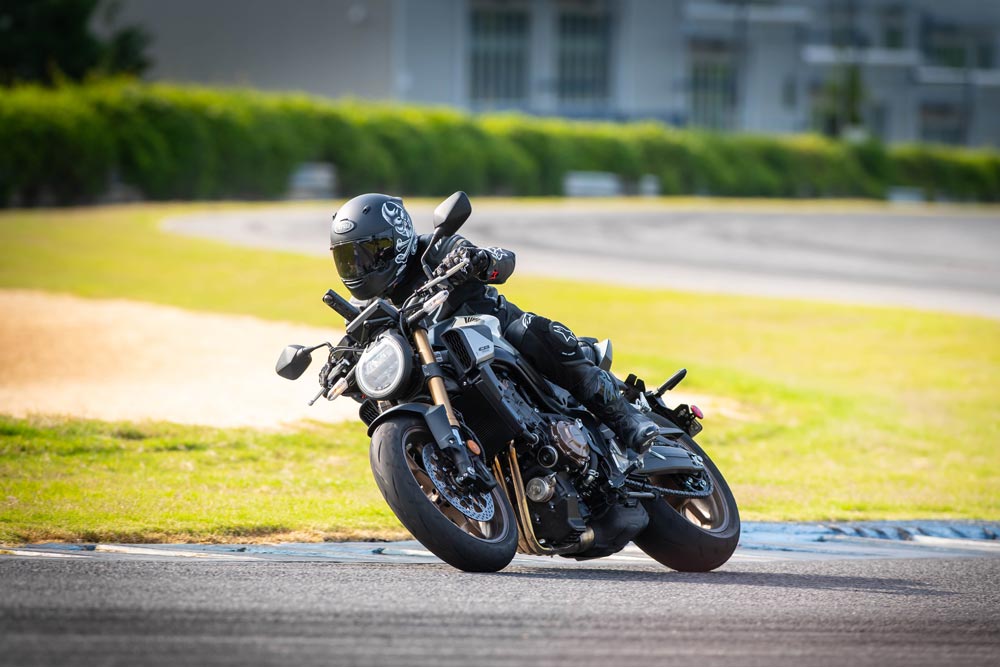
After leaving the racetrack and going to the lunch stop at Two Wheels of Suches, a great motorcycling destination in the North Georgia mountains, I again forced myself to keep my fingers on the grip and not use the clutch. If the E-Clutch was impressive on the racetrack, it’s even more impressive in stop-and-go traffic. Unfortunately, or not, we got stuck behind a semi for a bit, so the E-Clutch got a workout. Honestly, I think the Honda guys planned for that truck to be there because you begin to appreciate how convenient the system is in these situations. Whether you’re an experienced rider or not, constantly squeezing and releasing the clutch when stuck behind slow-moving traffic is a pain, and it has to be nerve-racking for a new rider. Still, the 2024 CB650R and CBR650R make dealing with these situations easy and effortless.
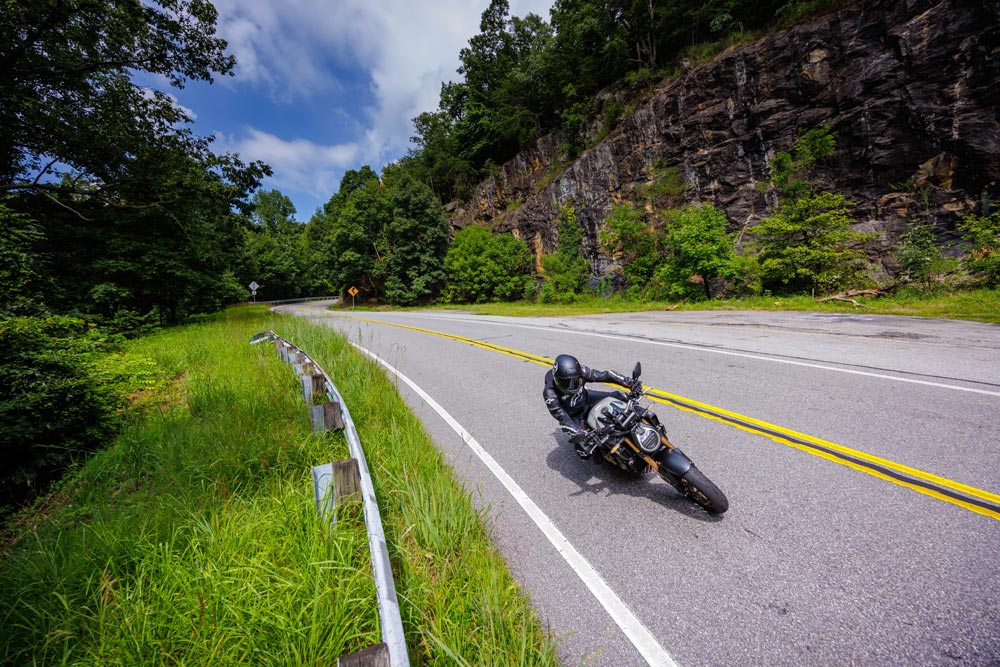
Honda says that your local dealer should have these new models on their showroom floors very soon. Best of all, the price for these new 2024 models—with the E-Clutch—is the exact same as it was for the 2023 models. With a low seat height, great styling, and priced below $10K, these bikes are great for just about anything you like doing on two wheels.CN
VIDEO | Honda’s ALL-NEW E Clutch – CB650R & CBR650R

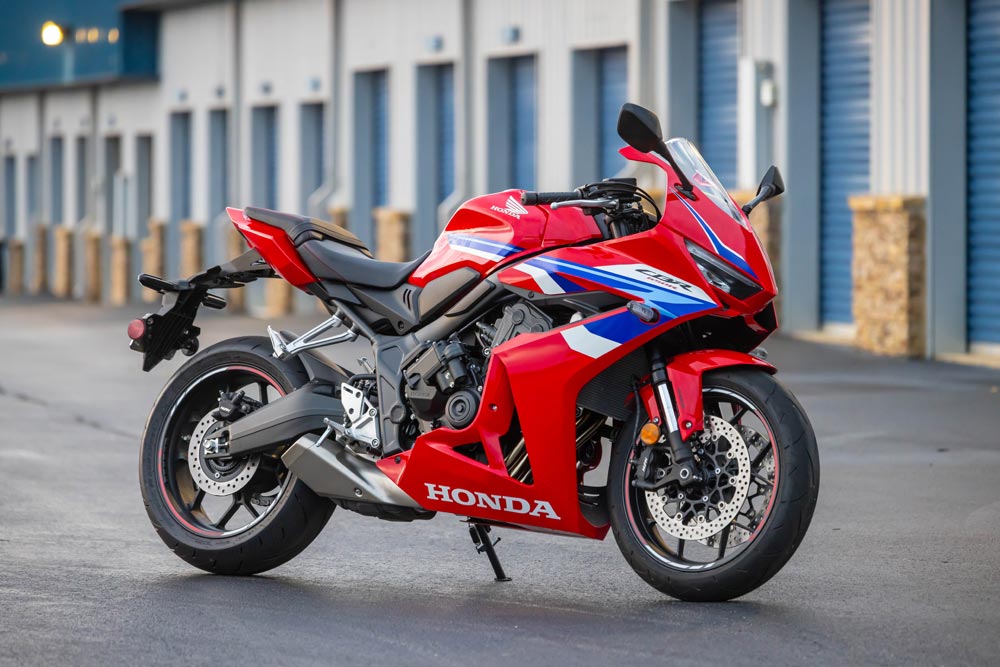
2024 Honda CB650R / Honda CBR650R Specifications
| MSRP | $9399/ $9899 |
| Engine type | Inline 4-cylinder |
| Displacement | 649cc |
| Valvetrain | DOHC, 4 valves per cylinder |
| Cooling system | Liquid |
| Bore x Stroke | 67.0 x 46.0mm |
| Induction system | PGM-FI w/ 32mm throttle bodies |
| Transmission | 6-speed w/ Honda E-Clutch |
| Final drive | #520 Chain; 15T/42T |
| Front suspension | 41mm Showa Big Piston fork |
| Rear suspension | Single Showa shock |
| Front-wheel travel | 4.3 in. |
| Rear-wheel travel | 5.1 in. |
| Front brake | Dual 310mm discs w/ radial-mount 4-piston calipers; ABS |
| Rear brake | Single 240mm disc; ABS |
| Front tire | 120/70-17 in. |
| Rear tire | 180/55-17 in. |
| Rake | 25.0° / 25.5° |
| Trail | 4.0 in. |
| Wheelbase | 57.0 in. |
| Seat height | 31.9 in. |
| Weight (curb, claimed) | 456 lbs. / 466 lbs. |
| Fuel capacity | 4.1 gal. |
| Color | Pearl Smoky gray / Grand Prix red |
| Warranty | Transferable, unlimited-mileage limited warranty |
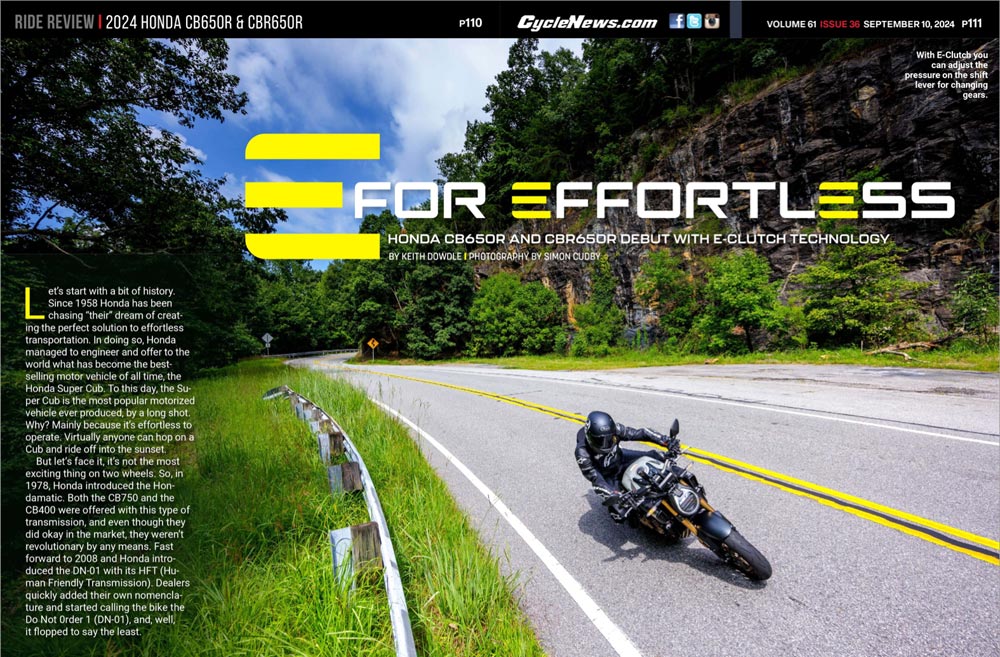
Click here to read the 2024 Honda CB650R & CBR650R Review in the Cycle News Digital Edition Magazine.
Click here for the latest Cycle News Sportbike motorcycle reviews and news.
Click here for more Honda motorcycle reviews and news.
